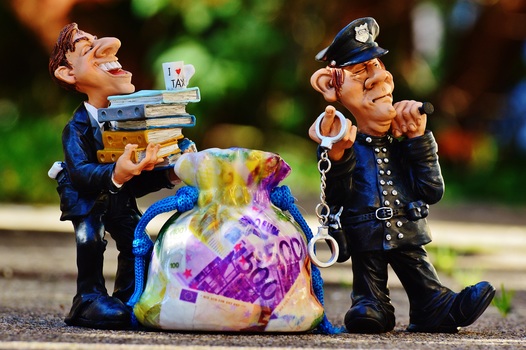
A Lesson in Email Safety
Everyone makes mistakes – sometimes it’s unwittingly and sometimes it’s a gamble that doesn’t pay off. One of the most dangerous mistakes any one of us could make on the Internet is to not be cognizant of our behavior. If you’re not careful, you may be well on your way to life of crime – or at the very least, a life of enabling popular online scams. The following types are prone to a number of Internet pitfalls.
1. The Pirate
Unfortunately Internet pirating has been around as long as copyrighted materials have lived on the Internet. It’s so ubiquitous that you may not be aware of violating laws when you download a song or movie, or convert one file to another file type for download.
To clarify, downloading or distributing whole copies of copyrighted material for personal use or entertainment without explicit permission from the copyright owner is against the law. Before you choose to use any type of peer-to-peer file-sharing program, you’ve got to do your research. Here’s a good resource for determining whether or not the document you want is copyright protected material .
2. The Email Chain Forwarder
The number one rule of email safety is “if it looks fishy, it is fishy.” Don’t forward it.
We all know what a suspicious-looking email reads like . It has our friend’s names as the sender but a subject line that doesn’t make any sense, comes across as ‘spammy’ or even contains a link. Even if you ‘recognize’ the sender – be it a friend or a company you do business with – do not reply to the email or open any links. Don’t open any attachments. Don’t forward it. Delete it right away. Not only is your own computer at risk, but so your email contacts – if you do choose unwisely to forward the chain to.
Furthermore, email is the least secure method of conveying personal or financial information. For that reason, a financial institution will never request that you share information with them via email. If anyone asks for personal information via email, that’s a red flag.
Here’s what you do. You use a unique password for each of your online accounts and you never use repeat passwords. You run regular virus scans on your computer, and automated updates. You only use software and applications of verifiably legitimate institutions like Google’s Play Store.
Check your bank and credit card accounts for any suspicious activity or unauthorized charges. Sign up for online statements if you do not already receive them to get the latest information.
3. The Couch Potato
You let things slide and cybercriminals are banking on your laziness – literally. When something happens to your account, you don’t report it to proper authorities and may even fail to contact your bank. You may not be a cybercriminal or online hacker but unfortunately, you will be an accomplice by letting the real bad guy get away! If you ever experience email fraud or become aware that one of your accounts may have been compromised – contact the security or fraud department of your bank right way. And don’t stop there! File a police report. Cybercrimes like theft and fraud are very real crimes although they take place digitally.
Here’s how to report a cybercrime . You can also report the message to the Federal Trade Commission at spam@uce.gov or through their online form and to any organization impersonated in the email.
Related Content from Positive Health and Wellness
4. The Poser
Did you know that there are often cases of innocent people being arrested for sending hate mail over the Internet? Sometimes, bad guys target will target a home user just for the sport of it, hack their email account over unsecure Wi-Fi networks and wreak havoc on their personal contacts. One solution is to use Wireshark , a free packet sniffing tool for Linux, Mac and Windows that can scan traffic flowing through a wireless network including cookies, forms and other HTTP requests.
It’s also important to make sure that your own emails aren’t mistaken for infected ones . To ensure that your friends don’t delete your emails, use very clear and concise subject lines. Add an email signature at the bottom of all your emails.
Congratulations, once you’ve got all these tips down, you’re well on your way to reform! For more information on cybersecurity see our blog post dedicated to popular scams and download our guide: The Ultimate Guide to Securing Your Home Network.

Comments are closed.